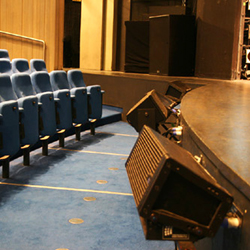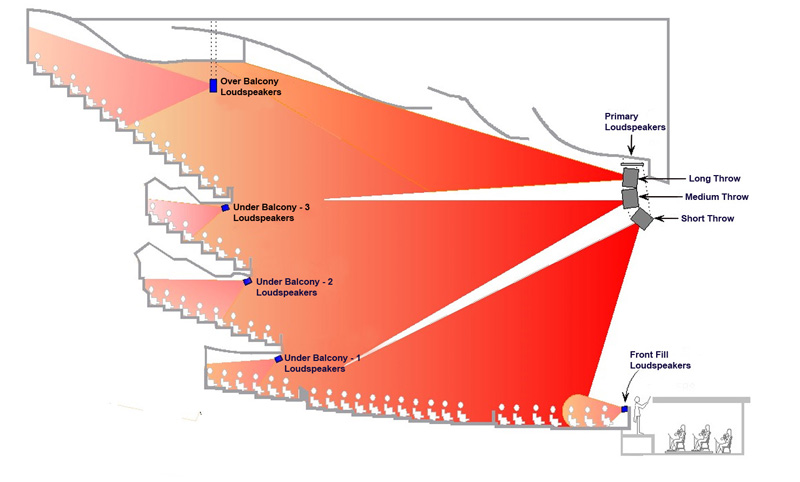
Similar Behavior
When faced with advanced knowledge of the need to fill holes in coverage or improve imaging, etc,. the type of loudspeaker we use requires just as much thought as we (hopefully) apply to the primary system devices.
Ideally, we’re able to utilize loudspeaker(s) made by the same manufacturer as the primary loudspeakers so that there is sonic consistency throughout the system.
Most reputable loudspeaker manufacturers go to great length to ensure that the various devices within a model line, if not their entire catalog, sound alike and exhibit similar behavior across their pass bands.
This can help to save time during measurement and optimization and may be more appealing and/or visually reassuring.
We must also provide appropriately sized fill loudspeakers. Too big may look bad (and may block sight lines) and too small may run out of gas (including potential damage to drivers) in addition to not providing the required pattern control.
The word “throw” relates to the distance a loudspeaker is able to project sound to a specific (targeted) seating area, and at the required sound pressure level (SPL).
Let’s look at a hypothetical example that’s quite common in the real world of permanently installed (and some touring) point-source array systems.
At the top of the array, there are “long throw” loudspeakers.
These 2-way, horn-loaded loudspeakers provide 40-degree (horizontal) by 20-degrees(vertical) dispersion, projecting sound to the most rear seating areas at sufficient SPL, without scattering sound on to the walls or ceiling.
Below that are “medium throw” loudspeakers supplying 65-degree (h) by 40-degree (v) coverage to the “heart” of the coverage area, and below that are 80-degree (h) by 50-degree (v) devices employed as “short throw” to cover seats in the nearer field.
When aimed and combined correctly, arrays of this type can provide complete, fairly seamless (including even levels) vertical and horizontal coverage.
A Necessary Part
Note that only a few of the multiband line array systems offer optional narrow horizontal coverage devices intended to sit at the top of the array for what we would consider to be long-throw duty.
But in the far more common line arrays with duplicate/like devices, the elements are aimed and gain adjusted for the desired characteristic of providing even SPL from front to back, and we would therefore categorize the collective elements at the top as “long throw.”

Properly designed (shaped) and configured J-arrays consist of elements or sections that we would categorize as long, medium and short throw.
But be it line arrays, point-source clusters or any other approach to mains, fill loudspeakers have remained a necessary part of what we do for decades.
We may need just one, a few, or many, but the majority of successful sound system designs rely on at least one type of fill loudspeaker to achieve complete coverage and/or for localization.
Over the decades we’ve assigned names to categorize fill applications: front, in, out, under balcony, over balcony, delay, box seat, lawn, down, overflow, stage, and so on.
Most of the time a device to meet a specific need is available, but once in a while, a new, specialized “custom” loudspeaker may need to be developed.
While there are numerous passing references to fill loudspeakers in articles and on manufacturer websites, and a book that discusses the alignment and equalization of them within larger systems, my research indicates that there’s nothing readily available that thoroughly details applications faced by live sound practitioners on a regular basis.
So next time out, I’ll begin a two-part series looking at specific fill design approaches and practices, as well as the basics of fill system optimization.
Tom Young is a senior engineer at Altel Systems, Inc., a metro-NYC contracting firm. Recent projects include The Juilliard School and WaMu Theater at Madison Square Garden. He is also principal consultant at Electroacoustic Design Services in Connecticut and recently measured/optimized loudspeaker systems at a recital hall, a swimming pool complex and several churches. In addition, he is the moderator of the ProSoundWeb Church Sound Forum.
